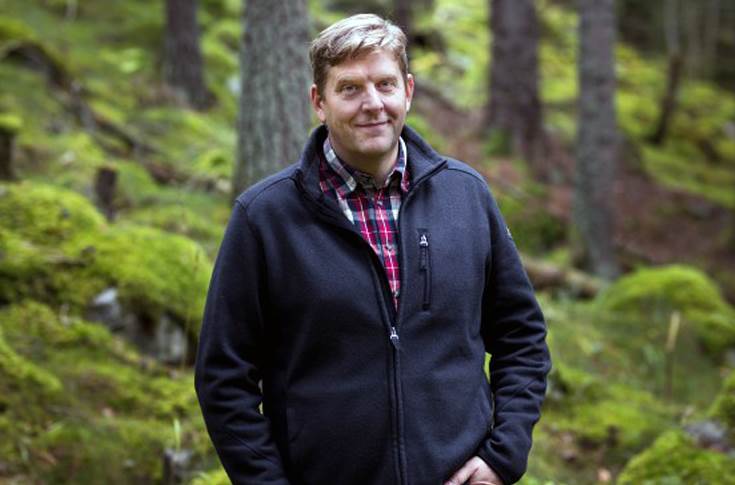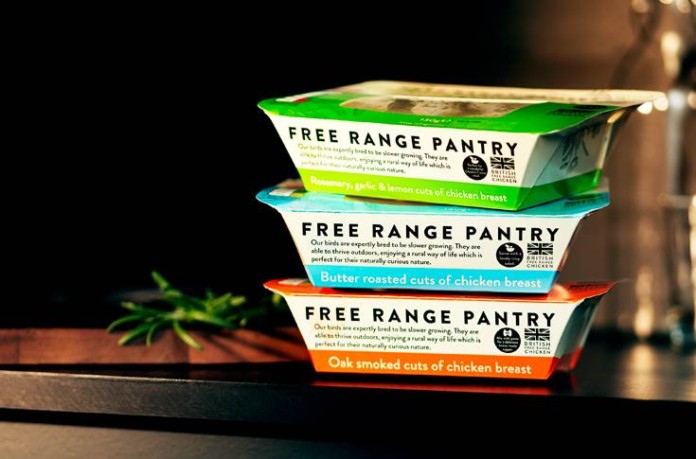Proven existing packaging solutions can reduce environmental impact by up to 80% compared with traditional all-plastic packaging. Composites such as Inverform, by Iggesund Paperboard, combine the required strength, stiffness, and renewability qualities of paperboard with a thin plastic layer to satisfy hygiene requirements.
The hunt for materials that can replace plastic is intense. Innovation work is being done on a global scale to find renewable alternatives to plastic. “Instead of waiting for that magic material, which may never come, packaging buyers concerned about the climate should consider the existing alternatives and move to composite materials,” says a senior executive of Iggesund Paperboard.
One very common type of food packaging is the plastic tray, which is then sealed for its onward journey to the consumer. Instead of making the entire tray of plastic, an easy alternative is to replace the plastic with a composite material consisting of renewable paperboard with a thin plastic layer that supplies the barrier properties needed to protect against moisture, grease and aromas.
The stiffness and strength comes from the paperboard’s wood fibres, and the plastic’s barrier properties provide the functional finishing touch. This relatively easy change of materials, he claims, can reduce the packaging’s climate impact by over 80%.

Various types of packaging made of plastic-coated paperboard have existed for decades. But thanks to the latest advances in paperboard manufacturing, they have gained better functionality and reduced their climate impact. The debate over fossil versus renewable materials and their respective climate impacts has further placed the combination of plastic and paperboard in an increasingly positive light.
“The disadvantages of plastic packaging is that they are normally totally fossil-based and are also not very easy to recycle,” says Johan Granås, Sustainability Director at Iggesund Paperboard. “In comparison, our paperboard’s climate impact is about 90% less than that of plastic.”
Bioplastics Not Yet an Alternative
Today bioplastics are possible alternatives in some cases. These do have a better origin than traditional plastic materials but their climate impact is still only marginally lower than that of the traditional plastics and they are often extremely hard to recycle. Bioplastics can also be difficult to handle in packaging manufacturers’ production processes, often resulting in poor productivity.
“Advances in bioplastics are constantly being made, because many companies are looking for a fossil-free bioplastic with properties that allow it to function smoothly in production – both for us as a material manufacturer and for those who manufacture the final packaging.”
An Iggesund Paperboard survey in 2019 found that non-food retail packaging could easily be replaced by less climate-damaging material. Johan adds, “We’ve found examples of packaging whose climate impact has been reduced by 99 per cent by replacing the material. It’s sensible to start there – to invest in the easy climate gains and wait for the innovation process to find solutions to the more difficult packaging challenges.”
Iggesund Paperboard is part of the Swedish forest industry group Holmen, one of the world’s 100 most sustainable companies listed on the United Nations Global Compact Index. Iggesund’s turnover is just over €500 million and its flagship product Invercote is sold in more than 100 countries. Since 2010, Iggesund says it has invested more than €380 million to increase its energy efficiency and reduce the fossil emissions from its production.
Featured Image Credit PrintWeek India









